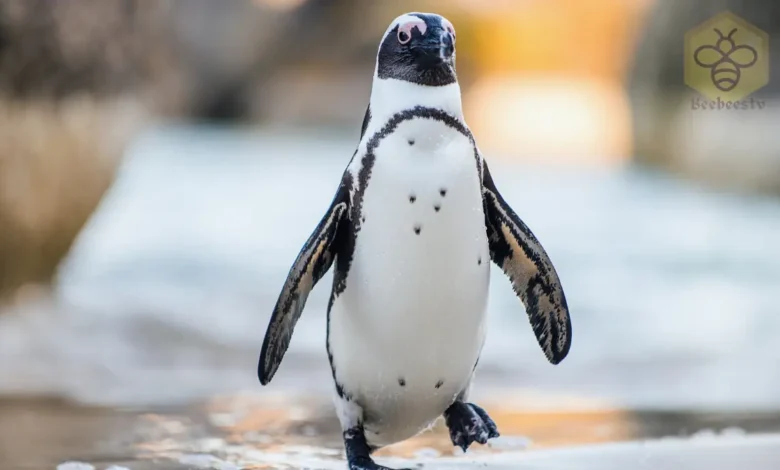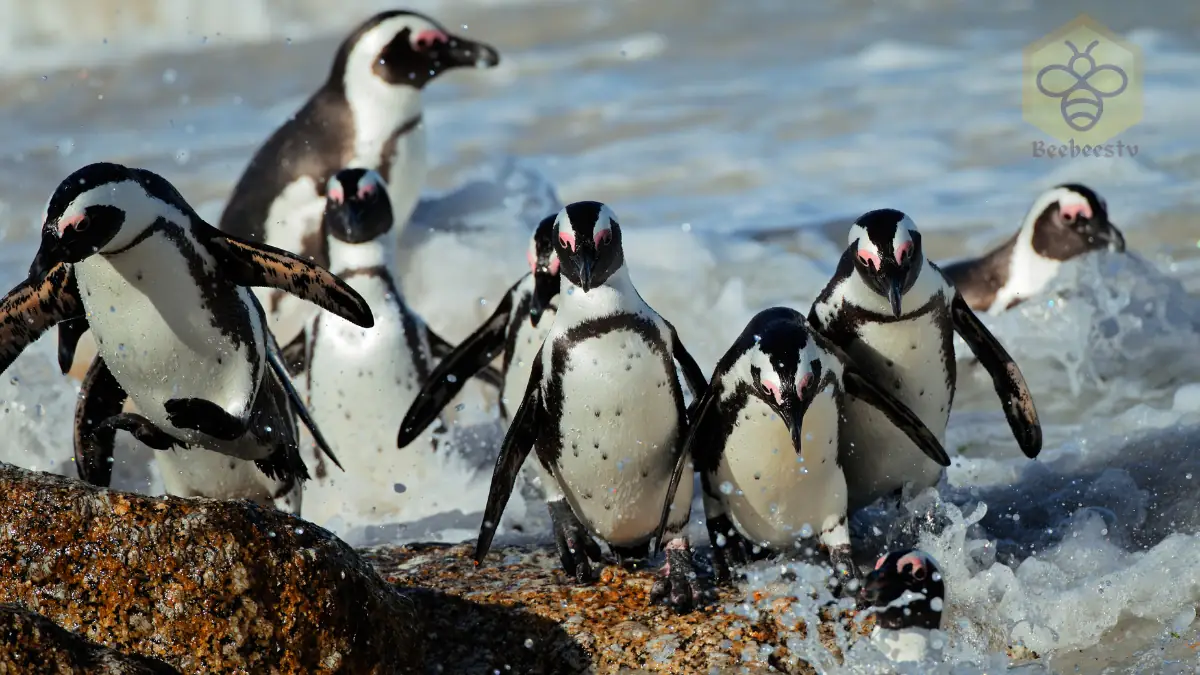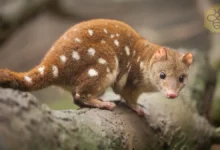African Penguins: Coastal Marvels

African Penguin: Africa’s Only Native Penguin Species
African Penguin
Introduction
The African penguin, also known as the “jackass penguin” due to its distinctive braying call, is the only penguin species native to Africa. Found along the southwestern coast, these charming birds have become emblematic of African marine life. However, despite their resilience, they face significant challenges threatening their survival.
Scientific Overview
Scientific Name
The scientific name of the African penguin is Spheniscus demersus, derived from the Greek words for “wedge” (referring to their distinctive body shape) and “plunging.”
Common Name
Commonly known as the African penguin, this species is also called the “jackass penguin” due to its braying sound that resembles a donkey’s call.
Scientific Classification
| Kingdom | Animalia |
| Phylum | Chordata |
| Class | Aves |
| Order | Sphenisciformes |
| Family | Spheniscidae |
| Genus | Spheniscus |
| Species | Spheniscus demersus |
Types
The African penguin is one of four “banded” penguin species in the Spheniscus genus, alongside the Magellanic, Humboldt, and Galápagos penguins. These species share a characteristic banded appearance and habitat along temperate coastal waters.
Habitat and Distribution
African penguins inhabit the coastlines of southwestern Africa, particularly in South Africa and Namibia. They are often found on rocky islands and coastal areas, including Boulders Beach and Stony Point in South Africa. These coastal habitats offer them protection from predators and easy access to the nutrient-rich waters of the Benguela and Agulhas currents, where they forage for food.
Physical Characteristics
Size and Weight
African penguins are relatively small, measuring between 24 and 28 inches in height and weighing about 5 to 9 pounds. Their compact size and streamlined bodies make them excellent swimmers, adapted to a marine lifestyle.
Appearance
African penguins have a distinctive black and white plumage, with a horseshoe-shaped black band across their chest and black spots on their belly, each pattern unique to the individual penguin. Their feathers provide insulation in cold water, while a layer of blubber offers additional protection. African penguins also have a small, pink gland above each eye that helps regulate their body temperature in the hot African climate.
Diet and Feeding Habits
African penguins are carnivorous, feeding primarily on small fish such as sardines, anchovies, and occasionally squid. They dive to depths of up to 200 feet, swimming swiftly with their wings acting like flippers. African penguins can stay underwater for about two minutes and may travel several miles during hunting trips. Their feeding grounds are concentrated around nutrient-rich waters, where schools of fish are abundant.
Predators and Threats
In the water, African penguins face predation from sharks, seals, and orcas, while on land, eggs and chicks are vulnerable to gulls, mongoose, and domestic animals. Human activities pose significant threats, including oil spills, habitat destruction, overfishing, and climate change. These factors have severely impacted fish availability and the safety of nesting sites, contributing to the decline in African penguin populations.
Reproduction, Nesting, and Lifespan
African penguins are monogamous, often pairing for life. They nest in burrows or shaded areas to protect their eggs from the sun. Females typically lay two eggs, which both parents take turns incubating for about 40 days. Once hatched, the chicks rely on parental care for food and warmth until they are old enough to fledge. African penguins have a lifespan of about 10 to 15 years in the wild, though some individuals in captivity have been known to live longer.

Population and Conservation Status
African penguins are classified as Endangered by the IUCN, with populations having declined drastically over the past century due to human impact. Conservation organizations are working to protect their habitats, rehabilitate injured birds, and implement fishing regulations to ensure a sustainable food supply. The African penguin has become a symbol of marine conservation in South Africa, with dedicated sanctuaries like SANCCOB (Southern African Foundation for the Conservation of Coastal Birds) helping to save injured and orphaned penguins.
Behavior and Lifestyle
African penguins are social birds, living in colonies and often forming close-knit bonds within groups. They are vocal, using braying calls to communicate, particularly during mating season or when defending territories. On land, they are known for their waddling gait, while in the water, they are agile swimmers, perfectly suited to their marine environment. African penguins also have a “preening” behavior, using oil from a gland near their tail to waterproof their feathers.
Ecological Role
African penguins play an important role in the marine ecosystem as predators of small fish, helping maintain the balance within the food chain. Their guano (excrement) also provides a natural fertilizer for coastal vegetation, supporting biodiversity around their colonies. As an indicator species, their population health reflects the overall state of marine ecosystems in their region.
FAQs About African Penguins
- Why are African penguins called “jackass penguins”?
They are nicknamed “jackass penguins” because of their loud braying call, which sounds similar to a donkey’s bray. - What do African penguins eat?
African penguins primarily feed on small fish such as sardines and anchovies, and they occasionally eat squid and crustaceans. - How do African penguins stay warm in cold water?
African penguins have a thick layer of feathers and a layer of blubber that insulate them, along with preen oil that waterproofs their feathers. - Are African penguins endangered?
Yes, African penguins are classified as Endangered due to factors like habitat loss, overfishing, oil spills, and climate change. - Where can I see African penguins in the wild?
African penguins can be observed along the southwestern coast of Africa, with popular sites including Boulders Beach near Cape Town and Stony Point in Betty’s Bay, South Africa.
Conclusion
The African penguin is a unique and beloved species that brings diversity to Africa’s coastal ecosystem. Its endearing appearance and social behavior have made it a favorite among locals and tourists alike. However, the challenges facing African penguins demand immediate conservation efforts to secure their future. With greater awareness, protective measures, and community involvement, there is hope for safeguarding this remarkable species for generations to come.


